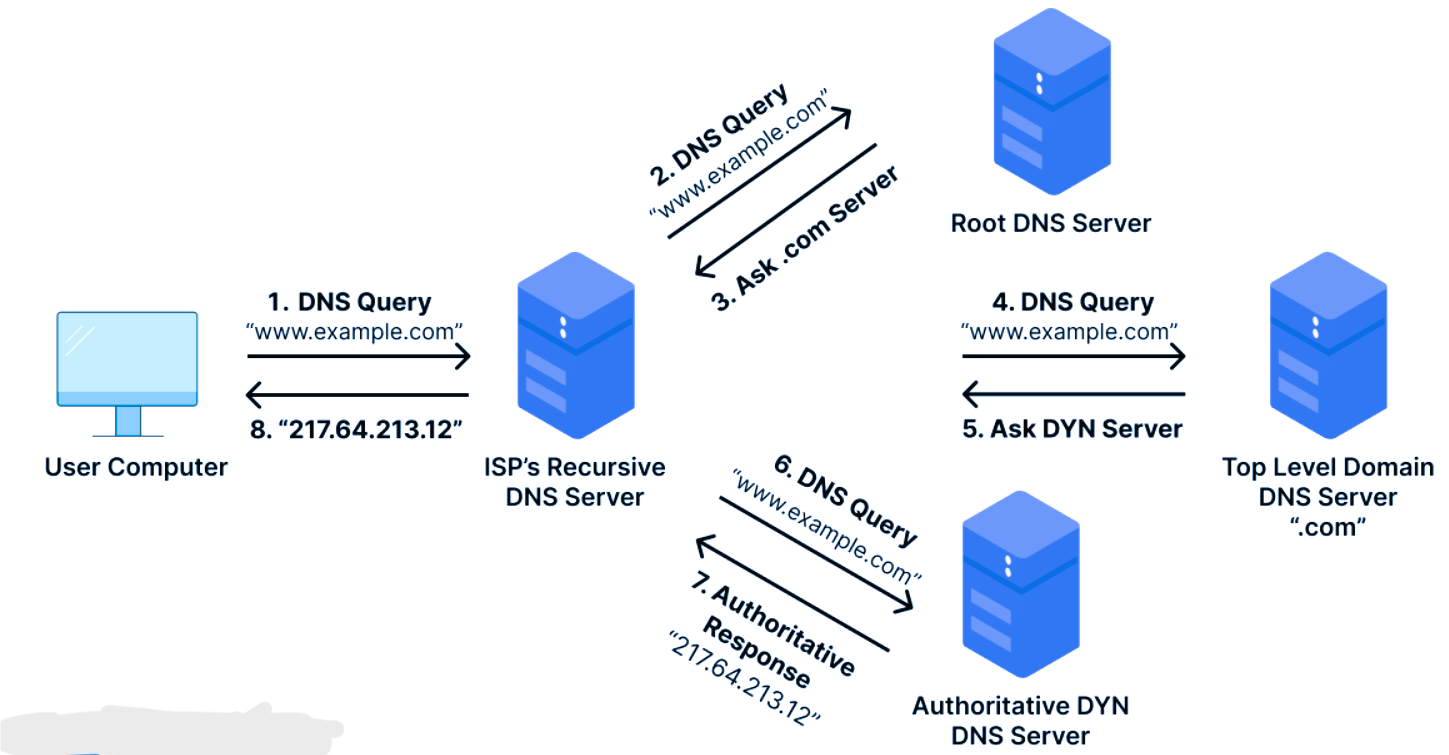Navigating the DNS Journey: From Client to SOA
 Pankaj Suryavanshi
Pankaj Suryavanshi
Introduction: Domain Name System (DNS) is the backbone of the internet, translating human-friendly domain names into IP addresses. In this blog, we'll demystify the DNS process step by step, tracing the path of a request from the client to the Start of Authority (SOA) server.

| Step | Description | Example |
| 1 | User enters URL in the browser. | www.example.com |
| 2 | Client contacts the local DNS resolver (usually ISP). | Local DNS IP |
| 3 | Local DNS checks cache; if not found, queries root server. | Root Server IP |
| 4 | Root server responds with the IP of TLD name server. | TLD Server IP |
| 5 | Local DNS queries the TLD server. | TLD Server IP |
| 6 | TLD server responds with the IP of authoritative name server. | Authoritative IP |
| 7 | Local DNS contacts the authoritative name server. | Authoritative IP |
| 8 | Authoritative name server responds with the IP address. | IP Address |
Explaining Steps:
User Input: A user types "www.example.com" in their browser's address bar.
Local DNS Resolver: The client's device contacts the local DNS resolver, usually provided by the Internet Service Provider (ISP).
Cache or Root Server: The local DNS resolver checks its cache for the IP address. If not found, it queries a root server.
Root Server Response: The root server responds with the IP address of the Top-Level Domain (TLD) name server responsible for ".com."
TLD Server Query: The local DNS resolver queries the TLD server for the authoritative name server of "example.com."
TLD Server Response: The TLD server responds with the IP address of the authoritative name server.
Authoritative Name Server Query: The local DNS resolver contacts the authoritative name server for the IP address of "www.example.com."
Authoritative Name Server Response: The authoritative name server responds with the IP address.
Conclusion: Understanding the DNS journey is crucial for comprehending how internet navigation works. From the client's initial request to the final response from the authoritative name server, each step contributes to the efficient translation of domain names into IP addresses, enabling seamless browsing.
Subscribe to my newsletter
Read articles from Pankaj Suryavanshi directly inside your inbox. Subscribe to the newsletter, and don't miss out.
Written by
